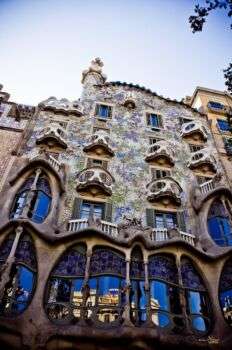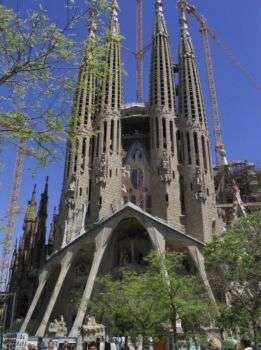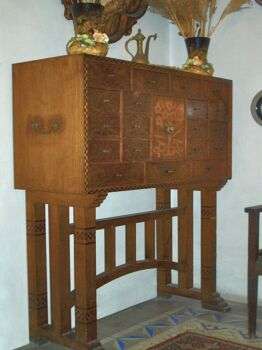Catalan Modernism gained popularity in the Catalan region of Spain in the 19th century, yet the capital of the movement was Barcelona.

Image source: https://search.creativecommons.org/photos/bbec3ecc-72aa-4167-bb37-3f420702b7fa by The Wedding Traveler
Catalan Modernism Beginning
Antoni Gaudí, born in 1852 in Barcelona, was often influenced by nature. Unfortunately, Gaudí died while working on his most important work, the Sagrada Familia in 1926. The structure incorporates traditions of Gothic and Byzantine cathedrals. He intended to conjure Christian belief through the architecture to express the message of the Evangelists. He achieved a symbiosis between form and Christian iconography, via logical structures, and geometrical patterns inspired by nature, with light and color playing a key role.

Image source: https://search.creativecommons.rg/photos/7932d2a6-909a-4f87-b4a2-570f82097790 by neusitas
Lluís Domènech i Montaner was born in Barcelona in 1850 and completed his studies in Madrid. Between 1905 and 1908 he designed, his most famous work, the “Palau de la Música.” His last work, finished between 1915 and 1920, was the restoration of the Montsió Convent in Barcelona.

Image source: https://search.creativecommons.org/photos/c92fc5aa-df69-49c0-a7b4-ac57db69863b by Bernard Gagnon
Catalan Modernism Architecture
The Catalan Modernist architect Josep Maria Jujol Gibert began to collaborate with Antoni Gaudí in several of his most important works. Jujol’s best known projects are Casa Batlló, Casa Milà, Park Güell, and Our Lady of Montserrat.

Image source: https://search.creativecommons.org/photos/267ea4fb-289d-4925-9958-a06074251533 by bjaglin
Casa Milà is also called “La Pedrera” (stone quarry) because it resembles an open quarry. He designed the house as a constant curve, outside and inside, including the rigor of geometry and naturalistic elements. One of the distinctive elements of the building is the roof, crowned with skylights. Yet, each nontraditional element has a specific architectural function.

Image source: https://search.creativecommons.org/photos/269fcb14-8066-4a38-a0e2-c2cb416cf0ae by FaceMePLS
Catalan Modernism Furniture
Gaudí’s overall interest in architecture led him to become passionate about all decorative elements, including furniture. Gaudí’s furniture didn’t go unnoticed. Most notably, BD was a company that wanted to create reproductions using the same materials. Gaspar Homar and Joan Busquets are two important artists of this art form.

Image source:https://search.creativecommons.org/photos/5bf8a929-79f5-409f-b796-e1104359f55c by Jordi Domènech i Arnau
Painting in Catalonia
The visual artists had some difficulty finding their spot in Modernism. However, the architects were free to express creativity. Painters, on the other side, stayed conservative for a long time. Among the most significant painters were Ramón Casas and Santiago Rusiñol I Prats. They had spent some time in Paris, after which they took Impressionism to Barcelona. At this time, paintings focused less on the detailed depiction of a landscape.

Fonte immagine: https://search.creativecommons.org/photos/a9165075-a2fc-4132-90fc-23fc39fa2232 di irinaraquel
Info source:
